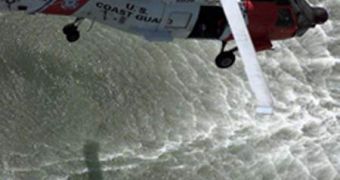Officials with the US National Oceanic and Atmospheric Administration (NOAA) say that spacecraft operated by the agency were essential to the rescue of 207 people last year, throughout the United States and surrounding waters.
All of these individuals were lost hikers, downed pilots, shipwrecked boaters and people in similar situations, and their deaths were avoided due to the fact that they carried beacons that enabled satellites to lock on to their positions.
These emergency beacons show up immediately on satellite, right alongside a set of GPS coordinates. NOAA investigators then transfer these data to emergency responders on the ground who go on to mount the actual rescue operations.
But the American agency is not alone in its efforts to help prevent the loss of lives. Its satellites – primarily those in geostationary and polar orbits, are part of the international Search and Rescue Satellite Aided Tracking System, which is also known as COSPAS-SARSAT.
The network contains 11 spacecraft in total, which together cover an important portion of the planet. The system kicks into gear when distress signals are received from aircraft or boats. There are also smaller, handheld personal locator beacons (PLB) available for use.
Users are strictly forbidden from activating their beacons whenever they feel like it. One of the conditions for using the system is to ensure that no one blocks the network with imaginary emergencies. The terms of use call for the beacons to be activated only in life-threatening emergencies.
Last year, this approach proved extremely successful. Some 122 individuals were saved from the water, 14 from downed aircraft, and about 71 from land-based accidents, such as avalanches. “With each rescue, this system performs the way it was intended – as a real, life-saving network,” NOAA SARSAT program manager Chris O’Connors says.
COSPAS-SARSAT managed to contribute to saving the lives of more than 30,000 people since it came online, back in 1982. About 6,700 of those people were rescued in the United States and surrounding areas.
NOAA is keen on reminding PLB users that they need to register their devices with the agency – at this link – if they want to benefit from better and faster assistance.

 14 DAY TRIAL //
14 DAY TRIAL //